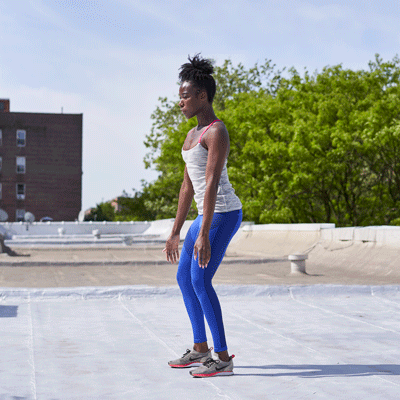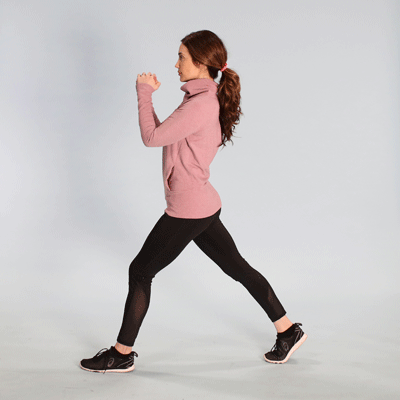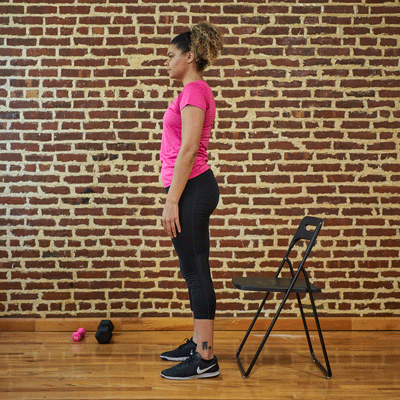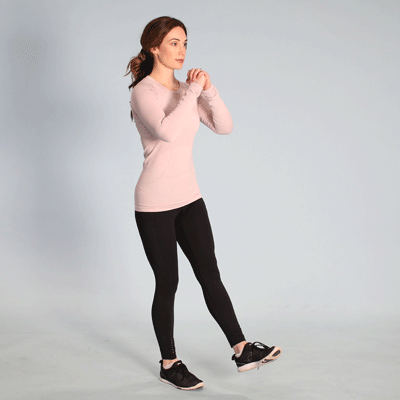Created for Greatist by the experts at Healthline. Read more
Whether you want big ol’ glutes or just want to strengthen your legs, squats reign supreme for working out your lower body.
The main reason to get familiar with squats every day is that you can do them anywhere, since they’re a bodyweight exercise. If you’re regularly on the go or you’re stuck in your home without access to a gym, squats are the perfect exercise.
But how many squats should you do per day to get all the benefits for your booty and beyond? We’ve looked into it so you can get to, well, squattin’.

So how many squats per day is best?
There’s no magic number of squats to do every day to get the most benefits. If you’re new to them, start slow with just a few and work up to higher numbers (and get lower for more glute-burning).
Start by doing 3 sets of 12–15 reps of at least one type of squat (about 45 squats max). You may want to give your body a rest after a set or not do squats the day after. You can keep doing more sets throughout the week.
So, to recap, there’s not a set number of squats you should do?
Nope. You determine the number of squats that works for you, based on how your body feels.
But if you need a number to work from, stick to 3 sets of 12–15 reps. This puts you at a total of 36–45 squats max per day, with some rest days mixed in.
Squat to it: How to start doing squats
Squatting is pretty simple, but proper form is crucial. There are also a few variations of squats so you don’t get bored. If you need to increase or decrease the intensity, we’ve got you.
1. Basic squat

Start with this plain-Jane squat and learn the squat basics.
To do a basic squat:
- Stand with feet shoulder-width apart.
- Bend knees and push hips back as if you’re going to sit in a chair. Raise your arms in front of you so they’re parallel to the floor. Keep neck neutral and chest up.
- Once thighs are parallel to the floor, pause, then push back up through your heels to stand.
Squats: Do’s and don’ts
Proper form ensures that you’re getting the most out of each squat without busting up your bod.
Do…
- lead with your hips
- sit back into your hips
- engage your core
Don’t…
- let your knees cave in
- let your knees go past your toes
- let your chest fall forward
- hold your breath
2. Curtsy squat

These may be a challenge at first, but you’ll grow to love them. Once they start feeling easy, put a dumbbell in each hand and get down.
To do a curtsy squat:
- Stand with feet shoulder-width apart. Rest hands on hips or keep them down at your sides.
- Step back and across with right foot until left thigh is parallel to the floor. Make sure your chest and chin stay up.
- Pause, then push up through the heel of your left foot to return to the starting position.
- Repeat on the other side to complete 1 rep.
3. Split squat

This is like a lunge on fire, as you’ll isolate one leg at a time and rely more on balance.
To do a split squat:
- Stand in a wide, staggered lunge-like stance, with right leg in front and left leg behind it, and feet flat on the floor.
- Bend knees until the one in the back nearly touches the floor and the thigh is parallel to the floor. Make sure front leg is bent but knee doesn’t go past your toes.
- Pause, then return to standing. Repeat the desired number of reps, then switch sides.
4. Goblet squat

Here’s a squat variation that’s great if you want to up your squat game with a dumbbell or kettlebell.
To do it:
- Grab a dumbbell (or kettlebell) by one end and cup it with your hands, letting the other end hang toward the floor. Keep your elbows bent.
- Stand with legs wider than shoulder width and toes pointing out.
- Bend knees and push hips back. Don’t move the dumbbell. Look straight ahead and keep a neutral neck. Your thighs can go beyond parallel to the floor, but get them down at least that far.
- Pause, then push up through your heels to return to the starting position.
5. Chair squat

Pull up a chair and pop this squat if you need some assistance.
To try a chair squat:
- Stand in front of the chair, facing away from it, with feet shoulder-width apart and toes pointing straight ahead.
- Engage core, keep spine neutral, and raise your head and chest.
- Lower your hips down and back as if you’re going to sit in the chair. (Raise arms in front of you for help with balance.)
- Tap the chair with your butt, but don’t sit down.
- Squeeze glutes and hamstrings to drive your hips forward, then push back up to the starting position.
6. Wall squat
All you need is a wall to mix up your squat routine. This variation is also easier on your knees and hips.
Try the wall squat:
- Stand with your back against a wall. Place feet about 12 inches from the wall, shoulder-width apart.
- Bend your knees and squat, keeping back against the wall, until thighs are parallel to the floor.
- Push up through your heels to return to the starting position.
7. Pistol squat

Need a major challenge? Up the pressure on your bod by doing this advanced one-legged squat. If you’re already a pro, try holding a dumbbell in each hand or a medicine ball with both hands.
Try the pistol squat:
- Stand on right foot and lift left leg out, holding it slightly in front of your torso. Keep arms by your sides or out in front for balance.
- Push hips back as you lower into a squat position, moving hips parallel to the floor.
- Squeeze glutes and push into right foot to return to standing.
Try a 30-day squat challenge
Here’s a fun way to introduce some friendly competition to your fitness routine or just to challenge yourself.
You’ll want to choose a few variations, or maybe start with a basic squat if you’re new to squats. The key is to do it for 30 days in a row — this will help you get into a routine and create a habit.
Ideally, try each type of squat, doing 3 sets of 12–15 reps per day. This means you’ll do about 45 squats per day.
You can mix them up to work different muscles and help prevent injury. If you need more oomph, add dumbbells.
Things to consider when doing squats
Squats are a very effective move that can work most of your body (if not all of it, when you pack on the dumbbells). As with any other exercise, it’s a good idea to warm up before you start droppin’ low.
Doing about 5 minutes of dynamic stretching can help loosen up your muscles and boost your range of motion, and it may help prevent an injury.
Takeaway
Squats are an awesome exercise to work your lower body. How many squats you should do per day really depends on your fitness and comfort levels — and your personal drive. You may want to start with a few sets of 12–15 squats or incorporate squats into your overall fitness routine.
Before worrying about how many squats you should do in a day, pay attention to nailing the proper form. Also learn about variations to mix up your squat repertoire and get more intensity out of squats when you’re ready.
Then, start squatting!
from Greatist Health RSS Feed https://ift.tt/2TkNNbh

No comments:
Post a Comment